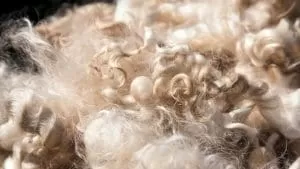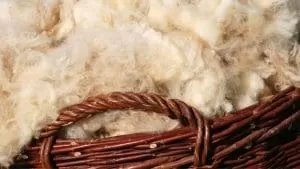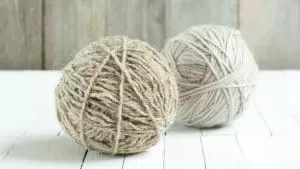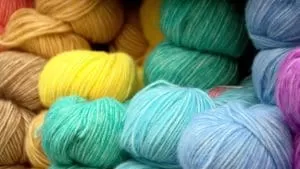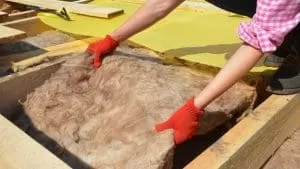Unraveling the Mystique of Wool: From Fiber to Fine Rugs
Step into the world of luxury and elegance as we unravel the mystique of wool, the exquisite material that weaves together the finest rugs at Beautiful Rugs, your premier rug store in the heart of Chicago. Imagine the softness underfoot, the intricate patterns that dance across your floor, and the undeniable allure of a woolen masterpiece adorning your living space. In this captivating blog post, we will delve into the enchanting journey of wool, from its origins to its transformation into the most coveted Persian and Oriental rugs.
As you embark on this exploration, prepare to be captivated by the story of wool – a fiber that has stood the test of time and remains unparalleled in its quality and versatility. Discover the meticulous production process that brings wool from the backs of sheep to the looms of skilled artisans. Unveil the different grades of wool and understand how they influence the beauty and durability of the rugs we cherish. And of course, let us not forget the rich tapestry of Persian and Oriental rugs, where wool reigns supreme, creating masterpieces that have enchanted admirers for centuries.
Join us as we embark on a journey through the realms of wool, uncovering its secrets and celebrating its magnificence. Whether you’re a seasoned rug connoisseur or simply drawn to the allure of luxurious textiles, this blog post is sure to captivate and inspire.
What is Wool?
Wool is a protein-based fiber composed mainly of keratin, which is also found in human hair. It possesses several unique characteristics that set it apart from other materials:
- Softness and Comfort: Wool fibers are incredibly soft to the touch, making them a delight to walk on and creating a cozy ambiance in any space.
- Insulation: Thanks to its natural crimp and air-trapping properties, wool provides excellent insulation, keeping rooms warm during colder months and cool during warmer seasons.
- Durability: Wool is known for its resilience and ability to withstand heavy foot traffic without losing its shape or texture. It’s a long-lasting material that can retain its beauty for generations.
- Moisture Absorption: Wool can absorb moisture up to 30% of its weight without feeling damp, making it an ideal choice for areas prone to humidity.
- Flame Resistance: One of the most notable characteristics of wool is its inherent flame resistance, making it a safer option for rug-making or home furnishings.
Brief History and Cultural Significance
The story of wool stretches back thousands of years, with evidence of its use by ancient civilizations such as the Egyptians and Mesopotamians. Wool has played a significant role in various cultures, symbolizing wealth, prestige, and craftsmanship. It has been used not only for practical purposes but also as a form of artistic expression through intricate rug designs and patterns.
In Persian and Oriental cultures, specifically, wool rugs hold immense cultural value. They have been woven by skilled artisans for centuries, showcasing exquisite craftsmanship and reflecting the rich heritage of these regions. Each rug tells a story, featuring traditional motifs, symbols, and colors that represent cultural beliefs and traditions.
Advantages of Wool as a Rug-Making Material
Wool’s unique qualities make it an excellent choice for rug-making. Here are some advantages:
- Natural Beauty: Wool’s inherent luster and natural sheen give rugs a luxurious appearance that cannot be replicated by synthetic fibers.
- Soil and Stain Resistance: The structure of wool fibers naturally repels dirt and stains, making maintenance and cleaning easier.
- Hypoallergenic: Contrary to popular belief, wool is hypoallergenic and can be enjoyed by individuals with sensitivities or allergies.
- Sound Absorption: Wool absorbs sound waves, reducing echoes and creating a quieter environment in your home.
- Environmentally Friendly: Wool is a sustainable and renewable resource, as sheep regrow their fleece annually. It is also biodegradable, ensuring minimal impact on the environment.
In short, wool is a remarkable material that possesses unique characteristics, a rich history, and immense cultural significance. Its softness, durability, and natural beauty make it an ideal choice for rug-making.
The Production Process of Wool
The journey of wool, from the humble beginnings of sheep to the creation of magnificent rugs, involves a meticulously crafted production process.
a. Sheep Rearing and Shearing
The production of wool begins with the careful rearing of sheep. Sheep are primarily raised for their wool, and different breeds produce various types of wool with unique characteristics. These sheep are nurtured in specific environments to ensure the quality and health of their fleece. When the time is right, skilled shearers carefully remove the wool from the sheep’s body, using precise techniques to ensure the sheep’s comfort and welfare.
b. Sorting and Grading of Wool
Once the wool has been harvested, it goes through a process of sorting and grading. Skilled professionals meticulously examine the wool, separating it based on its quality, length, and fineness. This step is crucial, as it determines the subsequent use of the wool. The finest and softest fibers are often reserved for high-quality rugs, while coarser fibers may be utilized for more durable or textured applications.
c. Cleaning and Scouring
To prepare the wool for further processing, it undergoes a thorough cleaning and scouring process. The wool is carefully washed to remove impurities, such as dirt, grease, and natural oils. Through a combination of water, gentle detergents, and mechanical agitation, the wool is cleansed, ensuring its purity and suitability for the next stages of production.
d. Carding and Combing
After cleaning, the wool fibers are carded and combed to align them in a uniform direction. Carding involves passing the wool through a series of fine teeth or wire brushes to separate and align the fibers. Combing, a more refined process removes shorter fibers and any remaining impurities, ensuring the wool is of consistent quality and texture. Carding and combing contribute to the smoothness, strength, and evenness of the wool fibers.
e. Spinning and Twisting
Once the wool has been carded and combed, it undergoes spinning and twisting. This process involves stretching and twisting the wool fibers to create yarn. The level of twist applied determines the strength and durability of the resulting yarn. Skilled craftsmen use spinning wheels or modern machinery to achieve the desired thickness and consistency of the yarn, readying it for the next stage of rug production.
f. Dyeing and Color Selection
The final stage in the production process involves dyeing and color selection. Wool yarn can be left undyed, showcasing its natural color, or dyed using a variety of methods and dyes. Artisans carefully select colors, considering the design, cultural significance, and aesthetic appeal of the rugs being created. Dyeing techniques range from traditional methods using natural dyes derived from plants and minerals to modern synthetic dyes that offer an extensive palette of hues.
In essence, the production process of wool is a labor-intensive and intricate journey that transforms raw fleece into a versatile and luxurious rug-making material. Whether you appreciate the craftsmanship of hand-woven rugs or the precision of machine-made designs, understanding the production process deepens your appreciation for the artistry and beauty of wool rugs.
Grades of Wool
The quality and characteristics of wool can vary depending on the grade of the fibers. Understanding the different grades of wool – fine, medium, and coarse – is essential when it comes to selecting the right material for rug-making.
- Fine Wool: Fine wool comes from sheep breeds known for their exceptionally soft and fine fibers. Examples include Merino, Rambouillet, and Cashmere. Fine wool is highly prized for its luxurious texture, excellent crimp, and superb elasticity. The fibers are typically thin and delicate, making them ideal for intricate rug designs that require intricate detailing.
- Medium Wool: Medium wool is obtained from various sheep breeds, such as Corriedale and Columbia. This grade offers a balance between softness and durability. Medium wool fibers are slightly thicker and coarser than fine wool, providing a sturdier foundation for rugs while still maintaining a level of softness. It is often used in rugs that require a good combination of comfort and longevity.
- Coarse Wool: Coarse wool is derived from sheep breeds like Lincoln or Romney. These fibers are thick, strong, and less soft compared to fine and medium wool. Coarse wool is favored by its durability and resilience, making it suitable for rugs that will endure heavy foot traffic or outdoor environments. It provides structure and strength to rugs, ensuring they maintain their shape and integrity over time.
How Wool Grades Affect the Quality and Appearance of Rugs
The grade of wool used in rug-making significantly impacts the quality and appearance of the final product. Here’s how:
- Softness and Comfort: Fine wool, with its ultra-soft fibers, creates rugs that are incredibly luxurious and plush underfoot. Medium wool offers a good balance between softness and durability, while coarse wool prioritizes strength over softness.
- Durability and Resilience: Coarse wool’s thicker and stronger fibers provide exceptional durability, making rugs more resistant to wear and tear. Fine and medium wool, though softer, may require additional treatments or backing to enhance their longevity.
- Texture and Appearance: Fine wool is prized for its ability to showcase intricate patterns and delicate details due to its fine fibers. Medium wool offers a slightly thicker texture, adding dimension to rug designs. Coarse wool, with its robust fibers, can create a more textured and rustic look.
Selecting the Right Grade of Wool for Specific Rug Designs
Choosing the appropriate grade of wool for specific rug designs is crucial to achieving the desired outcome. Considerations to keep in mind include:
- Design Complexity: Finer wool grades are better suited for intricate and detailed designs that require precision, such as Persian motifs or delicate floral patterns. Medium and coarse wool can work well for simpler or more geometric designs.
- Intended Use: Consider the level of foot traffic or the environment where the rug will be placed. Coarser wool may be more suitable for high-traffic areas or outdoor use, while fine and medium wool can provide a more luxurious feel in low-traffic spaces.
- Personal Preferences: The desired texture, softness, and visual aesthetics play a role in selecting the right wool grade. Consider personal preferences and the overall style and ambiance you wish to achieve in your living space.
Wool in Persian and Oriental Rugs
Wool holds a distinct and revered position in the world of Persian and Oriental rugs, playing an integral role in their creation and contributing to their rich cultural heritage.
a. Historical Significance of Wool in Persian and Oriental Rugs
Wool has been used in the creation of fine Persian rugs and Oriental rugs for centuries, dating back to ancient times. Its historical significance lies in its availability, versatility, and exceptional quality. The use of wool fibers in rug-making was deeply rooted in the nomadic and settled cultures of the regions where these rugs originated.
Persian and Oriental rugs became distinguished for their intricate designs, vibrant colors, and meticulous craftsmanship. High-quality wool played a crucial role in achieving these characteristics, as it allowed artisans to create intricate knots and capture the finest details in their designs. Wool’s natural resilience and durability ensured that these rugs would stand the test of time, becoming treasured heirlooms passed down through generations.
b. Weaving Techniques in Persian and Oriental Rugs
The art of weaving Persian and Oriental rugs involves a painstaking process that showcases the mastery and skill of the artisans. Wool is handwoven using traditional techniques passed down through generations, creating rugs of unparalleled beauty and craftsmanship. Some notable weaving techniques include:
- Knotting: The asymmetric or Persian knot, and the symmetric or Turkish knot, are commonly used in Persian and Oriental rugs. These knots are tied around the warp threads to create the intricate patterns and designs that characterize these rugs.
- Pile Weaving: The majority of Persian and Oriental rugs utilize pile weaving, where the wool fibers are looped around the warp threads to create a raised pile surface. This technique contributes to the luxurious texture and softness that these rugs are renowned for.
- Weft and Warp: The warp and weft threads form the foundation of the rug. The warp threads run vertically on the loom, while the weft threads pass horizontally through them, securing the knots and creating a sturdy base for the rug.
c. Unique Characteristics and Styles of Persian and Oriental Rugs
Persian and Oriental rugs encompass a wide range of styles, each with its own unique characteristics. These rugs are known for their intricate floral motifs, geometric patterns, and symbolic representations. Wool plays a crucial role in bringing these designs to life and enhancing their visual appeal. Some notable characteristics and styles include:
- Knot Density: Persian and Oriental rugs are known for their high knot density, which refers to the number of knots per square inch. Fine wool allows for greater knot density, resulting in highly detailed and intricate designs.
- Color Palette: Wool’s ability to absorb and retain dyes contributes to the vibrant and rich color palette seen in Persian and Oriental rugs. Traditional natural dyes derived from plants, roots, and insects were historically used, lending a timeless beauty to these rugs.
- Regional Variations: Persian and Oriental rugs encompass various regional styles, each with its own distinct characteristics. From the elaborate floral designs of Persian rugs to the bold geometric patterns found in tribal rugs, these styles showcase the diversity and artistry of rug-weaving traditions.
Most Used Types of Wool
In the world of rugs, certain types of wool have gained popularity for their distinct qualities and suitability for different purposes:
a. Merino Wool
Merino wool is highly regarded for its exceptional softness and fine fibers. This type of wool originates from Merino sheep, known for producing some of the finest and most luxurious wool in the world. Merino wool’s inherent softness creates rugs with a plush and velvety texture, adding a touch of luxury to any space. Due to its exquisite quality, Merino wool is often used in high-end rug designs that prioritize comfort and elegance.
b. Tibetan Wool
Tibetan wool, sourced from the Tibetan sheep breed, possesses remarkable durability and resilience, making it an excellent choice for rugs intended for high-traffic areas. Tibetan wool fibers are naturally strong and can withstand heavy use without losing their shape or texture. Rugs made from Tibetan wool maintain their beauty and structural integrity even in busy spaces, making them a preferred option for commercial settings or households with active lifestyles.
c. New Zealand Wool
New Zealand wool is renowned for its natural resilience and stain resistance. It comes from a variety of sheep breeds found in New Zealand, where the sheep graze on pristine pastures. The unique climate and vegetation contribute to the quality and strength of the wool fibers. New Zealand wool rugs are highly resistant to crushing, ensuring they retain their lush appearance over time. Additionally, the natural lanolin in New Zealand wool provides a built-in resistance to stains, making it easier to clean and maintain.
These types of wool are just a few examples of the diverse range of options available in the rug industry. Each type offers distinct characteristics that cater to different preferences and requirements. Whether it’s the softness of Merino wool, the durability of Tibetan wool, or the resilience of New Zealand wool, choosing the right type of wool allows for the creation of rugs that not only meet aesthetic expectations but also provide long-lasting performance in various settings.
Maintaining and Cleaning Wool Rugs
To ensure the beauty and longevity of your wool rugs, proper maintenance and regular cleaning are essential. Follow these tips and best practices to keep your rugs in excellent condition:
- Regular Vacuuming: Vacuum your wool rugs at least once a week to remove loose dirt, dust, and debris. Use a vacuum cleaner with a brush attachment or a canister vacuum. Be gentle and avoid using excessive force to prevent damaging the fibers.
- Rotate Your Rug: Periodically rotate your rug to promote even wear and prevent certain areas from fading or becoming more worn than others. This is especially important for rugs placed in high-traffic areas.
- Spot Cleaning: Attend to spills and stains immediately to prevent them from setting in. Blot the stain gently with a clean cloth or paper towel to absorb as much liquid as possible. Avoid rubbing the stain, as it can push the spill deeper into the fibers. Use a mild detergent mixed with water to gently clean the affected area, working from the outer edges toward the center. Rinse with clean water and blot dry.
- Avoid Direct Sunlight: Prolonged exposure to direct sunlight can cause the colors in wool rugs to fade over time. Protect your rugs by using curtains, blinds, or UV-blocking window films to reduce the amount of sunlight they receive.
- Professional Cleaning: Schedule professional cleaning for your wool rugs every 3 to 5 years or as needed. Professional rug cleaners like Beautiful Rugs have the expertise and equipment to deep clean and remove embedded dirt and stains without causing damage to the fibers.
- Proper Storage: When storing wool rugs, make sure they are clean and completely dry to prevent mold or mildew growth. Roll the rug instead of folding it to prevent creases. Store rugs in a cool, dry place away from direct sunlight, as excessive heat and humidity can damage the fibers.
- Protection Against Moths and Pests: Wool rugs are susceptible to damage from moths and pests. To protect against infestations, regularly vacuum both sides of the rug, paying close attention to edges and corners. Use moth repellents or natural remedies like cedar chips or lavender sachets in storage areas.
By following these maintenance and cleaning practices, you can preserve the beauty and extend the lifespan of your wool rugs. Remember to always refer to specific care instructions provided by the manufacturer or consult with a professional cleaner for more specialized care requirements.
Final Words: Wool Rugs At Beautiful Rugs
In conclusion, wool rugs hold a special place in the world of interior design, offering timeless beauty, remarkable craftsmanship, and a touch of luxury to any space. From their historical significance in Persian and Oriental rugs to the utilization of various types of wool, these rugs embody artistry, durability, and cultural heritage.
Wool, with its softness, durability, and natural resilience, remains a top choice for rug-making. Whether it’s the exquisite softness of Merino wool, the enduring strength of Tibetan wool, or the stain resistance of New Zealand wool, each type brings its own unique character and benefits to the rugs they create.
At Beautiful Rugs, we understand the allure and significance of wool rugs. Our collection showcases the mastery of artisans, the richness of cultural traditions, and the exceptional quality of wool. With attention to detail and a commitment to excellence, we offer rugs that are not only visually stunning but also durable and made to stand the test of time.
So, whether you’re seeking a statement piece for your living room, a cozy rug for your bedroom, or an elegant addition to your office, explore the world of wool rugs at Beautiful Rugs online or at our physical store and discover the beauty of wool rugs. Embrace the timeless allure of wool rugs and let them weave warmth, elegance, and sophistication into your home or any setting you desire.
